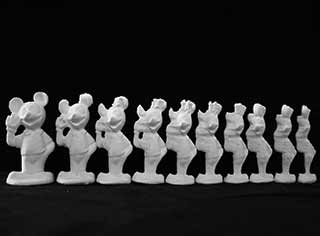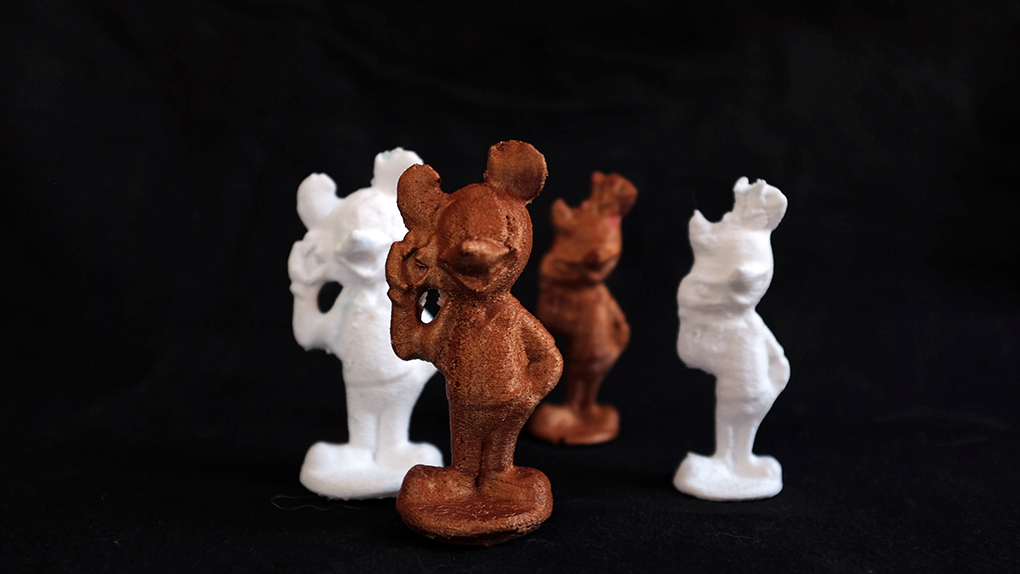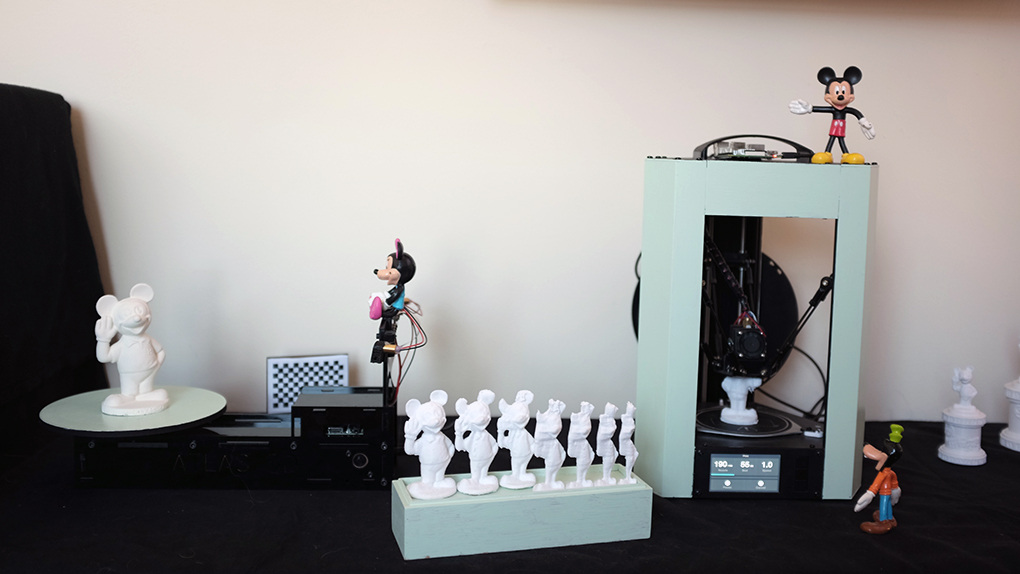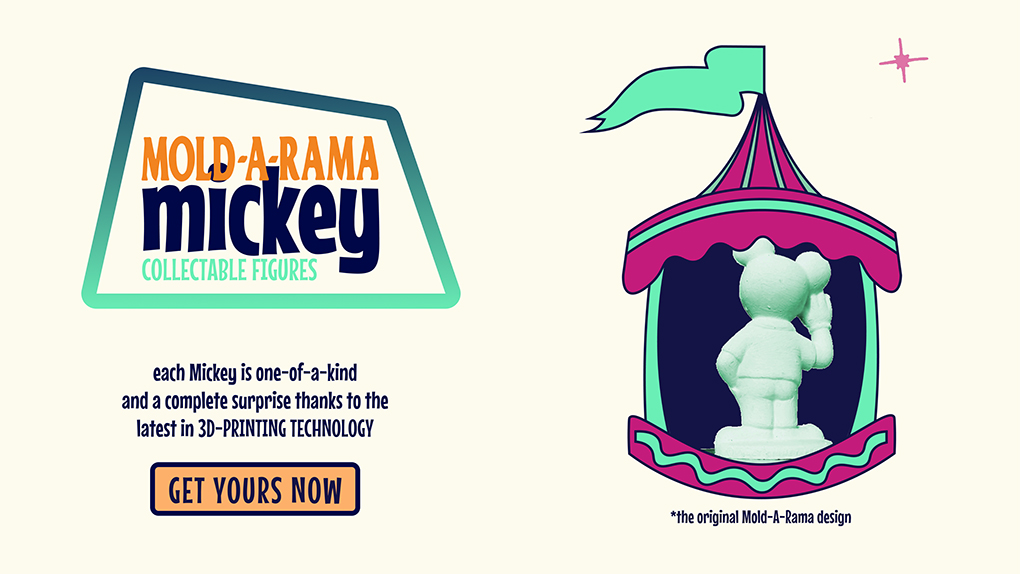DisneylandToyFactory.com is a two-part critical art project made up of a satirical website and an ongoing 3D printing experiment. Through a repeated, cyclical process of 3D scanning and printing the same figurine of Mickey Mouse from a renowned Disney-branded Mold-A-Rama machine new, more compelling, figures are produced ,which are then advertised with satiric consumerist language on the accompanying website.
Stefan Skripak
Description
The 1960s and 70’s in the United States were the peak of popularity for a rare type of Disney vending machine called the Disneyland Toy Factory, which produced injection-molded Disney figurines on-demand at theme parks and zoos. DisneylandToyFactory.com is a satirical project in the lineage of these machines that instead allows the unpredictability of digital fabrication technology to reveal what Claudia Hart refers to as “expressiveness through imperfection”. The first part of this project is the objects themselves called “Mold-A-Rama Mickey”, a series of 3D printed replicas of an actual Toy Factory figure manipulated by a unique process of iterative 3D printing and scanning that produces sequential Mickey figures, in a way such that each is more deformed than the last. This morphing as a result of a theoretically lossless process reveals a more interesting, meaningful form as mediated by the idiosyncrasies of that process itself. The second component of DisneylandToyFactory.com is a website, serving as the contemporary replacement for the physical vending machine. The main page offers simplified and vague exaltations of “Mold-A-Rama Mickey”, claiming that, “thanks to the advancements of 3D printing” these collectibles can be printed on-demand and uniquely for every customer. The reality, however, is that each Mickey sold is actually just the latest iteration of the transformed figures from the cyclical 3D printing process. By framing this subversive concept in consumerist terms, it both offers a light jab at the emptiness of consumption as well as provides a stealthy way of bringing the resistance of this new more expressive object to more people. Finally, the artistic merit of the imperfections is further emphasized through the creation of high-quality resin versions of a selection of the figures, all glitches, and striations intact.





